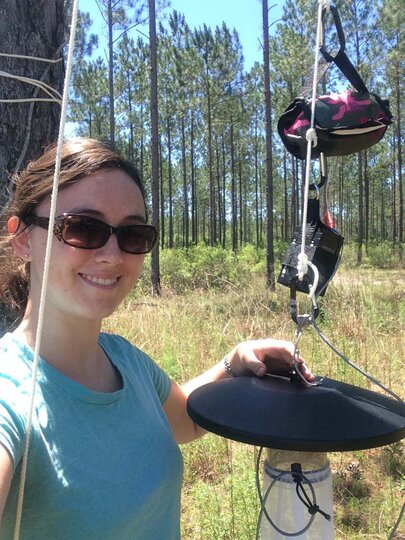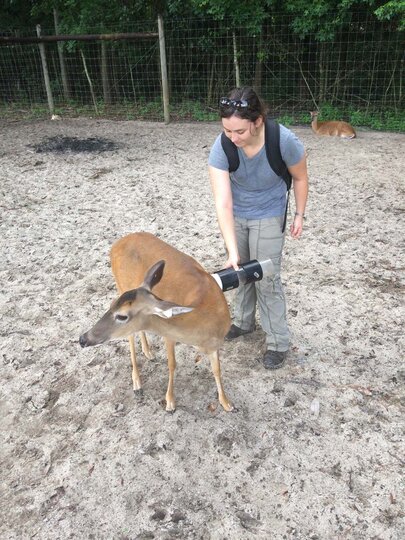Miss Bethany McGregor
2020 UPDATE:
I graduated last May with my PhD in entomology from the University of Florida. I did a postdoc at the CDC where I studied an invasive population of Aedes aegypti and also completed laboratory studies with West Nile virus and Oropouche virus. I have since started a full time research entomologist position with the USDA Agricultural Research Service at the Arthropod borne Animal Diseases Research Unit in Manhattan, KS. I continue to study Culicoides ecology in this capacity, with specific areas of interest including host associations, sugar feeding ecology, spatial ecology, and larval ecology. I am also interested in the ecology of Culicoides-borne diseases including epizootic hemorrhagic disease virus, bluetongue virus, and vesicular stomatitis virus. Through the vast breadth of ecological research we pursue, we hope to leverage our results to better understand not just the true breadth of vector species in North America but also management and control strategies that target specific ecological characteristics of vector midges.
Bethany McGregor is a PhD candidate at the University of Florida-Florida Medical Entomology Laboratory in the United States. She is studying the ecology of Culicoides on deer farms and investigating potential vector species of epizootic hemorrhagic disease virus (EHDV) in the southeastern US.
"Despite the great abundance and diversity of Culicoides within the United States, the ecology and vector status of many species has been understudied due to their lower impact on economically valuable industries in much of North America and the challenges associated with handling such small insects. However, a recent upsurge in white-tailed deer farming in the United States has led to increased investment in protecting valuable herds from EHDV and a renewed interest in studying the Culicoides vectors.
My research focuses on understanding the ecology of Culicoides on deer farms in the southeastern United States with the end goal of helping farmers protect their deer herds. One such study was an investigation into the vertical stratification of Culicoides on deer farms. Many farmers use insect control methods that are most effective near the level of the animals, but our data indicate that the majority of Culicoides are moving vertically into the forest canopy cover, outside of the range of current vector control efforts. We also investigated blood meal sources to determine how the Culicoides on deer farms and big game preserves are using available hosts. Our data indicated that not only were Culicoides feeding much more frequently on game preserve animals than native wildlife, but some species showed a preference for feeding on EHDV host species, which is likely important in the overall epizootiology of this pathogen on farms. We are also investigating possible vector candidates for EHDV in Florida using qRT-PCR to detect viral RNA in wild collected midges. Using this method, we have been able to identify putative vector species for which we can develop tailored control methods in an effort to protect Florida deer herds".


